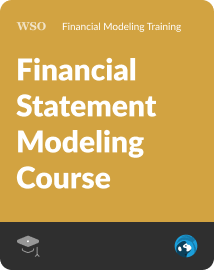Certificate of Deposit (CD)
Refers to a savings account that holds a fixed amount of money for a fixed period and pays interest.
What Is a Certificate of Deposit (CD)?
There are abundant options for storing cash, whether in savings, checking accounts, stocks, or even under your mattress.
A certificate of deposit, or CD, allows individuals to earn interest on their deposit with one stipulation: the money must remain untouched for a specified period.
They are considered to be a type of savings account.
These deposits are a financial product offered by almost all banks and credit unions. Banks need deposits from customers to offer loans to other customers. This is why they incentivize deposits by paying an interest rate.
The interest earned is compounded daily, monthly, or annually and is credited to your account to be withdrawn at the end of the maturity date.
Certificates of deposits were originally paper documents that showed the interest rate and proof of your deposit that was held at a bank.
Deposits are an integral element in fractional banking, a system that increases the money supply. Financial institutions are required to be able to pay back a customer’s deposit when requested.
With normal savings accounts or checking accounts, this withdrawal of funds can occur at any moment.
However, these eliminate the risk of withdrawal of deposits by customers for financial institutions. This is because they must be held for a specified period but often pay higher interest than other banking accounts.
The penalty for early withdrawal is the sum of several months of interest. For example, a certificate with a term of 12 months may be accompanied by an early withdrawal penalty of three months of interest. However, every financial institution is different.
Opening a certificate of deposit is similar to opening a traditional savings account or checking account.
They are issued by banks, which are insured by the Federal Deposit Insurance Corp. (FDIC), and credit unions, which are insured by the National Credit Union Administration (NCUA).
Funds are insured for up to $250,000 per depositor per financial institution. As a result, these accounts are as secure as savings or checking accounts.
It’s essential to research the various options and shop around for the one that best fits your financial situation.
When choosing a certificate, you lock in four factors in regard to your deposited funds:
- Interest rate
- Term
- Principal
- Institution
Banks and credit unions typically require depositors to lock in their funds for three to five years.
For example, let’s say you deposit $20,000 in a CD with a term of 2 years and an interest rate of 3%. At the date of maturity, you would have $21,218. This value does not account for inflation.
There are six different types of non-traditional certificates:
- No-penalty
- High-yield
- Jumbo
- IRA
- Bump-up or step-up
- Brokered
Understanding Certificate Of Deposit (CD)
A certificate of deposit (also known as a CD) is a type of financial product that banks and credit unions offer to their customers.
In exchange for earning a certain amount of interest on their deposits, customers must keep their CDs untouched for a predetermined amount of time or risk having to pay a penalty if they take them out early.
Even though all banks provide CDs, their product offerings could differ in terms. For instance, interest rates offered by banks may vary. Since certificates of deposit cannot be withdrawn or resold, they often offer greater interest rates than savings accounts or other money market products.
There are traditional CDs that have the four predetermined characteristics mentioned above, but then there are some that have unique features.
The types of certificates offered to a customer depend on the bank or credit union.
Types of specialty certificates
1. No-penalty
This is also known as a liquid deposit because it allows the depositor to withdraw their funds before the maturity date. However, this comes with lower interest rates.
2. High-yield
These tend to have higher-than-average interest rates for CDs. Online banks and credit unions more commonly offer these as opposed to traditional brick-and-mortar banks.
3. Jumbo
These are similar to traditional deposits but have a minimum deposit requirement. This is typically around $100,000, but they come with a higher yield
4. IRA
This traditional certificate is held in a tax-advantaged individual retirement account.
5. Bump-up or step-up
With this type of deposit, there is usually an increase in the interest rate at some point during the term. The difference between bump-ups and step-ups is that bump-ups require you to ask for a rate increase, but step-ups follow a fixed schedule of increases.
These tend to have lower interest rates than traditional deposits and higher minimum deposit requirements.
Generally, you can only request an increase once with bump-up deposits, depending on the term.
6. Brokered
This account is opened with a third party, such as a brokerage firm. As a result, it may come with more fees and assistance.
Factors Affecting Certificate Of Deposit
Factors are:
Interest rate
The interest rate on your funds is locked in for the duration of your certificate of deposit. The interest rate is typically closely correlated with the interest rate set by a country’s central bank at the time of issuance of the deposit. In the United States, this is called the federal funds rate.
The Federal Reserve sets the federal funds rate. Your yield on your deposit remains the same even if the federal funds rate changes.
This can work in favor of or against the depositor because interest rates could increase, but your deposit will remain at the lower rate established when the account was opened.
The interest rate is generally higher the longer the term length is.
Term
The duration is locked in after being signed. There is a fee if the funds are withdrawn before the term ends. They can come in various lengths, such as six months, one year, two years, etc.
The maturity date marks the end of the term, which is the earliest the cash can be withdrawn without a penalty.
When it matures, there is a grace period (usually one week) where you can withdraw the funds. If the cash is not withdrawn, the CD will typically be renewed for the same term as before.
Principal
The principal amount that is deposited varies for each bank or credit union, and there is no standard amount. However, this amount is locked in when the CD is signed.
Institution
The financial institution with which the certificate of deposit is opened is locked in when it is signed. This institution determines the three aforementioned factors.
Advantages And Disadvantages Of Certificate Of Deposit (CD)
Like any other method of storing your money, certificates of deposit have advantages and drawbacks.
It is always important to research savings methods to ensure they are suitable for your current financial situation.
Advantages
- This method of saving is generally considered one of the safest investments because the interest rate is fixed, and the issuing bank guarantees the deposit. The combination of these two elements minimizes volatility and risk.
- The yield is higher for CDs than for savings accounts and money market accounts.
- They can prevent the temptation to withdraw the funds early because of the penalty.
- They typically do not have any monthly or annual fees.
- There is an abundance of options for term length and type.
Disadvantages
- There is a lack of liquidity because the cash cannot be withdrawn until maturity unless you are willing to pay a hefty fee.
- While the yield is higher than savings accounts, they are lower than bonds and stocks.
- They earn a fixed interest rate, even if the interest rates rise during the term.
- Inflation could be higher than the fixed rate your deposit is earning, effectively reducing your purchasing power.
There are three options when your certificate of deposit reaches maturity:
- You can roll the deposit into a new Certificate at that financial institution. The term is generally similar to the duration of your previous deposit.
- You can transfer the funds into your savings, checking, or money market account.
- The funds can be withdrawn and transferred to an external bank account or mailed to you as a paper check.
The bank will contact you to allow you to choose where the cash goes, but the default action is to roll over the funds into a new CD.
How Are Yield Rates Determined?
The federal funds rate fluctuates at the discretion of the Federal Open Market Committee (FOMC). This rate can change every six to eight weeks and represents the interest banks must pay on money borrowed from the Federal Reserve.
When the federal funds rate is low, banks have more cash reserves and can pay more interest. Inversely, when the federal funds rate is high, banks have fewer cash reserves and pay less of a yield.
In December of 2008, the federal funds rate was essentially zero, causing deposits to decrease because citizens had no incentive to deposit money significantly. This effort lifted the U.S. economy out of the Great Recession.
A similar but less catastrophic event occurred in March 2020 during the COVID-19 pandemic. The federal funds rate dropped to between 0% and 0.25% to revive the U.S. economy.
What Is A CD Ladder?
A CD ladder allows depositors to hedge against interest rate changes over time. Rather than locking your funds at one interest rate, this ladder method enables you to benefit from the changing interest rates and provides more liquidity.
For example, let’s say you wanted to put a total of $25,000 into certificates of deposit. So you divide the total amount of money you want to deposit by five. The allocation is as follows.
When the one-year account matures, you will deposit the cash into a five-year deposit. Then, when the two-year account matures, you deposit the funds into another five-year certificate of deposit.
You continue this process until you have five certificates that earn five-year interest rates. Each of these accounts now matures once a year, increasing the liquidity of your money while also earning a higher interest rate.
Choosing A Certificate Of Deposit
The process for opening a certificate of deposit is similar to that of a savings account, but the initial deposit is the only deposit you can make. These can be opened at almost every bank and credit union, so shop around for the best fit for you.
Factors to consider when choosing a bank or credit union:
- Types of CDs offered
- Interest rates
- Term length options
- Early withdrawal penalties (EWPs)
- Whether the deposit will be automatically reinvested after the maturity date
- Minimum deposit requirements
- Whether the financial institution is federally insured
Certificate Of Deposit (CD) FAQs
There are three primary differences:
- Certificates of deposit typically have higher interest rates because the cash is less liquid as a result of the maturity period.
- A savings account’s interest rate can be changed at any time by the financial institution, whereas the interest rate of the CD remains fixed.
- Savings accounts provide unrestricted access to your money, but with CDs, you must wait until the maturity date to avoid paying a fee.
It is important to consider your financial situation when opening a certificate of deposit.
It may be beneficial if you want to set aside money for a future purchase, such as a house or car, and will not need immediate access.
This enables the money to be out of reach and forces you to resist the temptation to spend it, all while earning a higher interest rate than a savings account.
Additionally, if you are looking to avoid stock market volatility but still want to earn interest on your money, this method of saving could make sense.
Similar to traditional savings accounts, the interest earned is considered taxable income. However, the interest earned is taxed when the bank pays the interest to your account, not when the funds are withdrawn.
Even if the maturity period is over a year, you will still be taxed yearly. For instance, if the term of your deposit were three years, you would pay tax on the interest earned each year for three years.
You must report the earnings if the interest earned is more than $10. You can find more information about the 1099-INT tax form here.
The interest is not taxed if put in certain tax-advantaged accounts like an IRA.
The term length depends on your financial situation and when you require access to the funds.
You may also want to consider what is expected to happen with the Fed’s rate, as this is closely tied with the yield of certificates of deposit.
If the Fed’s rate is expected to increase, then the yield you earn will likely increase if you wait to lock in a rate.
Anticipation of an increase in the federal funds rate could be a sign to open a short- or medium-term certificate, so you are not locked into a lower interest rate.
If the federal funds rate is expected to decrease, it may be wise to lock in a deposit at the higher interest rate for a longer term.









or Want to Sign up with your social account?